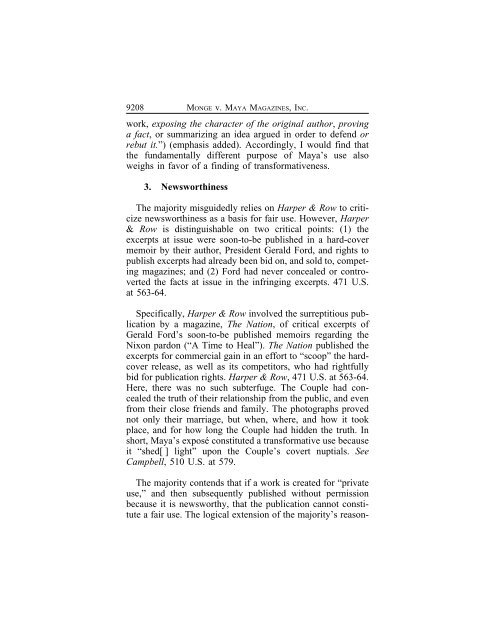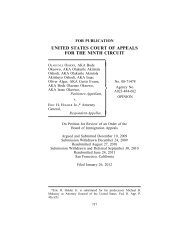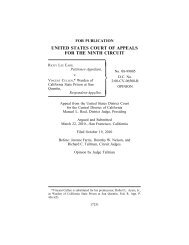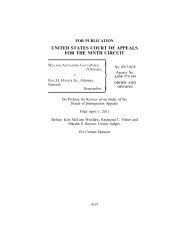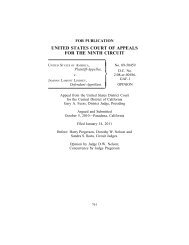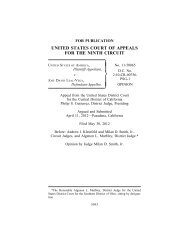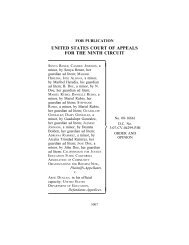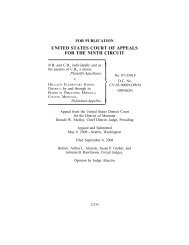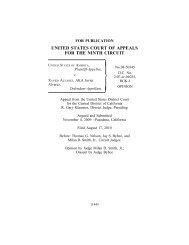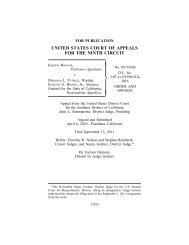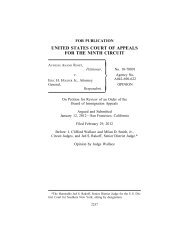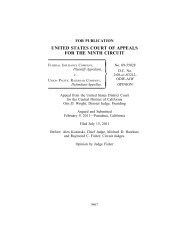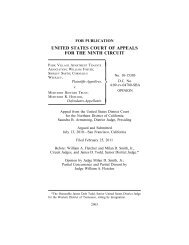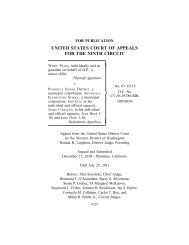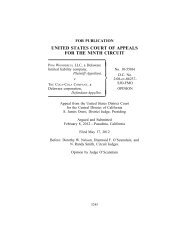NOELIA MONGE V. MAYA MAGAZINES, INC. - Ninth Circuit Court of ...
NOELIA MONGE V. MAYA MAGAZINES, INC. - Ninth Circuit Court of ...
NOELIA MONGE V. MAYA MAGAZINES, INC. - Ninth Circuit Court of ...
You also want an ePaper? Increase the reach of your titles
YUMPU automatically turns print PDFs into web optimized ePapers that Google loves.
9208 <strong>MONGE</strong> v. <strong>MAYA</strong> <strong>MAGAZINES</strong>, <strong>INC</strong>.<br />
work, exposing the character <strong>of</strong> the original author, proving<br />
a fact, or summarizing an idea argued in order to defend or<br />
rebut it.”) (emphasis added). Accordingly, I would find that<br />
the fundamentally different purpose <strong>of</strong> Maya’s use also<br />
weighs in favor <strong>of</strong> a finding <strong>of</strong> transformativeness.<br />
3. Newsworthiness<br />
The majority misguidedly relies on Harper & Row to criticize<br />
newsworthiness as a basis for fair use. However, Harper<br />
& Row is distinguishable on two critical points: (1) the<br />
excerpts at issue were soon-to-be published in a hard-cover<br />
memoir by their author, President Gerald Ford, and rights to<br />
publish excerpts had already been bid on, and sold to, competing<br />
magazines; and (2) Ford had never concealed or controverted<br />
the facts at issue in the infringing excerpts. 471 U.S.<br />
at 563-64.<br />
Specifically, Harper & Row involved the surreptitious publication<br />
by a magazine, The Nation, <strong>of</strong> critical excerpts <strong>of</strong><br />
Gerald Ford’s soon-to-be published memoirs regarding the<br />
Nixon pardon (“A Time to Heal”). The Nation published the<br />
excerpts for commercial gain in an effort to “scoop” the hardcover<br />
release, as well as its competitors, who had rightfully<br />
bid for publication rights. Harper & Row, 471 U.S. at 563-64.<br />
Here, there was no such subterfuge. The Couple had concealed<br />
the truth <strong>of</strong> their relationship from the public, and even<br />
from their close friends and family. The photographs proved<br />
not only their marriage, but when, where, and how it took<br />
place, and for how long the Couple had hidden the truth. In<br />
short, Maya’s exposé constituted a transformative use because<br />
it “shed[ ] light” upon the Couple’s covert nuptials. See<br />
Campbell, 510 U.S. at 579.<br />
The majority contends that if a work is created for “private<br />
use,” and then subsequently published without permission<br />
because it is newsworthy, that the publication cannot constitute<br />
a fair use. The logical extension <strong>of</strong> the majority’s reason-


